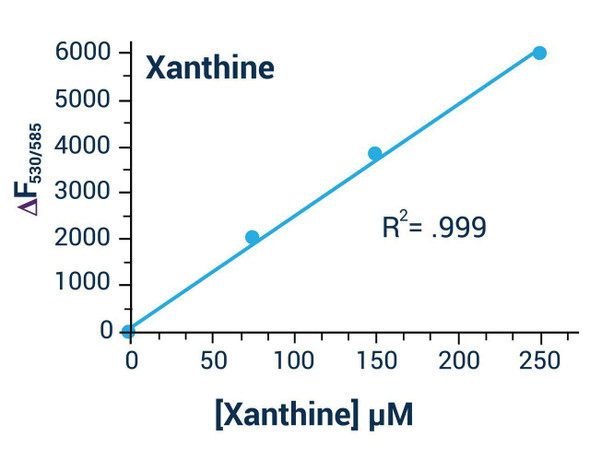Xanthine Oxidase Activity Assay Kit - Fluorometric (MAES0006)
- SKU:
- MAES0006
- Product Type:
- Assay
- Detection Method:
- Fluorometric
- Instrument:
- Microplate Reader
- Sample Type:
- Serum, Plasma, Animal Tissue
- Sensitivity:
- 0.01 U/L
- Range:
- 0.01 -1.2 U/L
- Assay Time:
- 25 min
- Shipping:
- Gel Pack
- Research Area:
- Oxidative Stress
- Research Area:
- Antioxidant
- Research Area:
- Enzyme Activity
- Research Area:
- Clinical Chemistry
Description
| Product Name: | Xanthine Oxidase Activity Assay Kit - Fluorometric |
| Product Code: | MAES0006 |
| Product Size: | 96 Assays |
| Sample Type: | Serum, plasma, animal tissue |
| Assay Time: | 25 min |
| Instrument: | Fluorescence Microplate Reader |
| Sensitivity: | 0.01 U/L |
| Detection Range: | 0.01 -1.2 U/L |
| Inter CV: | 9 |
| Inter CV: | 4.1 |
Xanthine oxidase (XOD) is widely distributed in the tissue and cell cytoplasm of human heart, lung, liver and so on, and the mucosa of small intestine is the most abundant. XOD in serum mainly comes from liver cells. When liver cells are damaged, the content of XOD in serum will increase sharply, which is of great significance for the identification of hepatocellular jaundice and obstructive jaundice. In addition, when XOD is abnormally active in the body, it will lead to the generation and excessive accumulation of a large amount of uric acid, leading to hyperuricemia and gout.
Hypoxanthine are oxidized by xanthine oxidase (XOD) to produce xanthine and super oxygen anion, which will quickly converte to hydrogen peroxide in the system, and then, in the role of peroxidase, hydrogen peroxide can oxidize the non-fluorescent probe to fluorescent substance. By measuring the fluorescence value, the corresponding the activity of xanthine oxidase can be calculated.
| Shelf Life: | 6 Months |
| Storage: | -20°C |
| Shipping: | Gel Pack |
| Research Area: | Enzymes, Oxidative stress |






